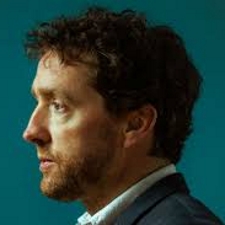Colm Mac Con Iomaire in conversation

b'
Colm Mac Con IomaireAlmost twenty years ago Colm Mac Con Iomaire was struggling to describe his early attempts at composition and made a distinction between \\u201ctunes\\u2019 and \\u201cmusic\\u201d. Much of his playing life up to that point had been in the Irish traditional world of \\u201ctunes\\u201d effectively the dance music which makes up much but by no means all of the instrumental repertoire in Irish traditional music. His father\\u2019s people came from the Conamara Gaeltacht and Colm\\u2019s family were Irish speakers living in Dublin. The Irish language sean n\\xf3s unaccompanied singing tradition with its storehouse of ancient and beautiful airs was embedded early on in his musical consciousness. On his mother\\u2019s side there was classical instrumental music on the violin and piano and Colm learned to play as a very young child. It was a musical home, one visited by musicians and singers\\u2026. a place of naturally occurring opposites \\u2026Irish and English, rural and urban, classical and traditional, old and new.A friendship with another busker, Glen Hansard, was followed by a leap into the professional mainstream and a new role, playing fiddle with the wildly popular The Frames whose live gigs were and are the stuff of fan lore legend.At the heart of the Frames whirlwind was a still centre. It pulled Colm back and inward. In the late nineties the Irish language television broadcaster TG4 offered opportunities to write scores for film. The compositions he made for these productions came from an interior place whose deep roots lay in traditional Irish music but also in an older way of life and thought, consciously mediated through his personal life lived out in the contemporary space.So it was not surprising that the title for Colm\\u2019s first solo album The Hare\\u2019s Corner/C\\xfainne an Ghiorria signified not only an acknowledgement of the importance of that old culture but also an urgent plea for \\u201cthe hare\\u2019s corner\\u201d in contemporary culture\\u2026a still place where space and time are set aside for something beautiful for its own sake.His work in film and theatre has allowed him to progress and mature as an orchestrator of his own compositions. With his new work his chosen title And Now the Weather refers to the introduction to the final item on radio and tv news bulletins. The weather report is viewed as a means of keeping the distress of reality at bay. It is a title riven with irony.And Now The Weather marks a return to collaboration. From the impressive solo run that was The Hare\\u2019s Corner, the multitasking on stringed instruments, the immaculate production, this new album features orchestral levels of players and instruments. In addition to his own fluent playing on almost the entire family of stringed instruments from fiddle and viola through guitar bouzouki and zither a further 21 players of pianos, brass, percussion, strings, harp and vocals feature. His default voices are fiddle and viola and his orchestrations are structured around the expansive range of tones and accents he has become capable of achieving on these instruments. He is a musical colourist of subtle tones and nuances, a master of mood and atmosphere. He is superbly served in his choice of musicians here. Sensitive and intuitive, they are with him for the full journey this music takes from gaiety to menace from chaos to peace from motion to stillness.
'